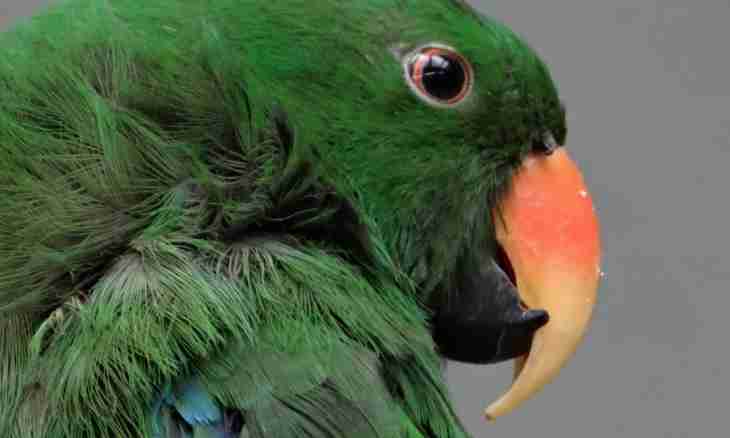The molt at parrots is a natural regeneration process. It allows feathery to change an old pen-type cover for new periodically. If change of plumage does not affect the state of health of your pet, then "high temples" in itself on his little body should not disturb you. When you notice strong indications of an illness at a parrot, it is necessary to address for consultation the experienced veterinarian. He will explain you the reasons of a molt and will estimate a condition of a bird.
Very young parrots, about 2-3 months from a sort (this age can fluctuate depending on breed and features of contents feathery), endure the first molt. Biologists call it juvenile. If the grown-up baby bird began to fade, it speaks about the begun puberty. Usually through two-three of months the juvenile molt comes to an end. The parrot updates the pen-type dress and can be considered as mature.
About two times a year the adult birds (for example, at budgerigars) can have so-called periodic molts. Usually regeneration of plumage happens after the period of reproduction (nesting). Some breeds of parrots update the vestments continuously, they do not note a certain period of a molt. While the bird in whole or in part changes the feathers, veterinarians prescribe her the balanced diet (greens, animal protein, germinated cereals, vegetables) and polyvitamins. At the fading feathery all exchange processes are strengthened therefore it can be a little sluggish, passive. After change of plumage it will be full of strength again. Process of a molt at parrots proceeds in a certain order. All this time of a bird can fly. Swing and steering feathers are replaced at them with new in pairs from two parties that allows to balance normally. However so-called baby birds - "runners" also occur among parrots. At these poor fellows before a departure the major plumelets necessary for normal flight drop out of a nest. It is not natural change of plumage, but the real disease. For the first time veterinarians found it in France among domestic budgerigars therefore it received the name of "the French molt". Why it occurs? According to researches of scientists, in tissues of sick baby birds there is a smaller amount of protein, than in tissues of their healthy fellows (even from the same brood). One of the reasons of a painful molt, presumably, - the shortage of protein and other nutrients in the first days of life of "runner". Why still do parrots fade? It appears, these impressionable birds are capable to dump covering and tail (and sometimes even swing) feathers from shock. For example, if you roughly seize the pet during sleep or will frighten during treatment. This phenomenon is called "a shock molt" and it is considered protective reaction of an organism. Biologists compare it to dropping a tail at a lizard during threat for life. According to a remark of veterinarians, at natural process of change of plumage at parrots the body temperature increases a little. If the molt is caused by pathological processes and reactions of an organism, the body of feathery loses natural thermal insulation. The parrot begins to freeze, temperature of his body falls. Good food and heat is necessary for your pet. For whatever reason the bird changed plumage, during this period especially attentive leaving is necessary for it.
